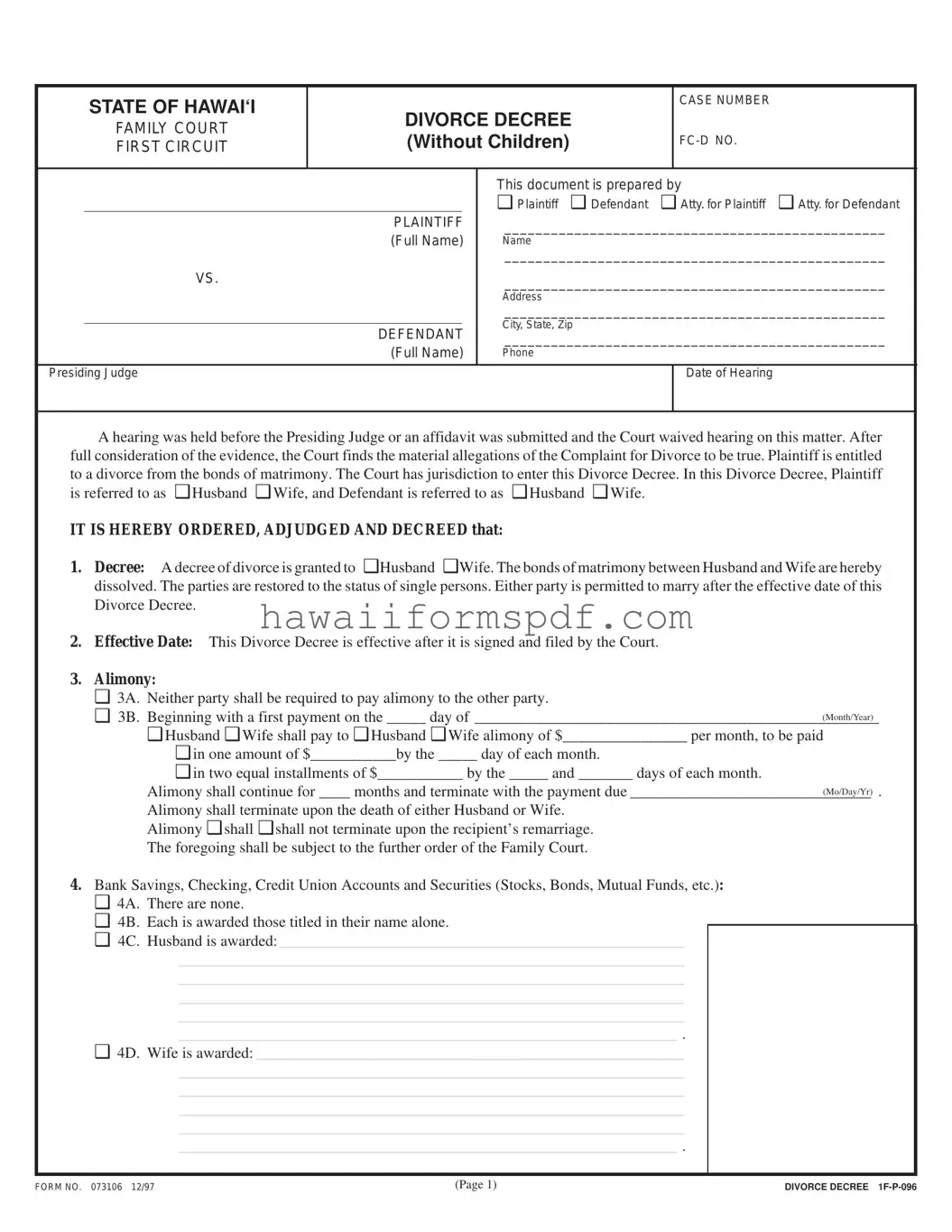5.Vehicles (Autos, Trucks, Motorcycles, Trailers, Campers, Boats, etc.):
❑5A. There are none.
❑5B. Each party is awarded the vehicles titled in their name alone.
❑5C. Husband is awarded: _____________________________________________________________________________
_____________________________________________________________________________________________
_____________________________________________________________________________________________
____________________________________________________________________________________________ .
❑5D. Wife is awarded: ________________________________________________________________________________
_____________________________________________________________________________________________
_____________________________________________________________________________________________
____________________________________________________________________________________________ .
Necessary transfer documents shall be signed no later than ten days following the filing of this Divorce Decree. If either party fails to do so, then the Director of Finance of the City and County of Honolulu is authorized and directed to transfer the ownership of vehicle(s) if requested to do so.
6.Real Property:
❑6A. Neither party owns any interest of any kind in any real property.
❑6B. The real property shall be divided as follows: _________________________________________________________
_____________________________________________________________________________________________
_____________________________________________________________________________________________
_____________________________________________________________________________________________
_____________________________________________________________________________________________
_____________________________________________________________________________________________
_____________________________________________________________________________________________
____________________________________________________________________________________________ .
7.Life Insurance:
❑7A. There is none.
❑7B. Each party is awarded the life insurance policy(ies) now held on their life, together with any cash value therein and subject to any debt thereon.
❑7C. The life insurance shall be divided as follows: _________________________________________________________
_____________________________________________________________________________________________
____________________________________________________________________________________________ .
8.Retirement Accounts:
❑8A. There are none.
❑8B. Each party shall keep their own.
❑8C. The retirement accounts of the parties shall be divided as follows: _________________________________________
_____________________________________________________________________________________________
_____________________________________________________________________________________________
_____________________________________________________________________________________________
_____________________________________________________________________________________________
_____________________________________________________________________________________________
____________________________________________________________________________________________ .
9.All Other Assets (Personal Belongings, Furniture, Household Effects, Art, Stamps, Coins, Tools, Equipment, Jewelry, Accounts Receivable, Investment Assets, Business Assets, Cemetary Plots or Niches, Tax Refunds Due, etc.):
❑9A. Each party is awarded the personal belongings and the household effects in their possession.
❑9B. Husband is awarded: _____________________________________________________________________________
_____________________________________________________________________________________________
_____________________________________________________________________________________________
____________________________________________________________________________________________ .
❑9C. Wife is awarded: ________________________________________________________________________________
_____________________________________________________________________________________________
_____________________________________________________________________________________________
____________________________________________________________________________________________ .



